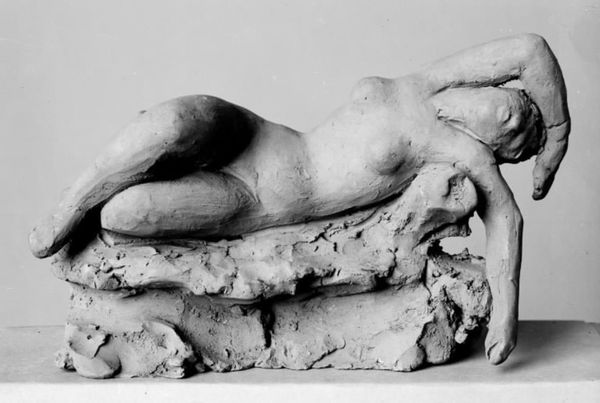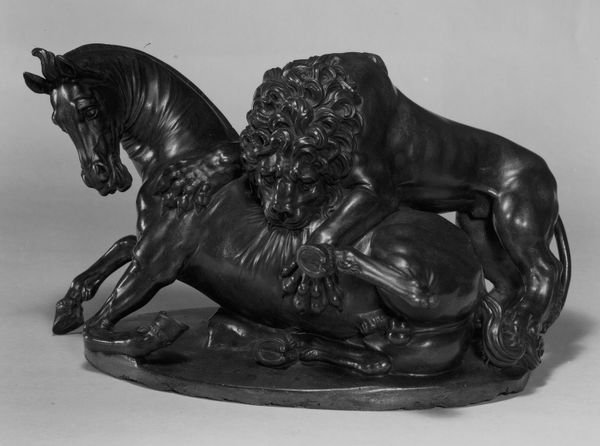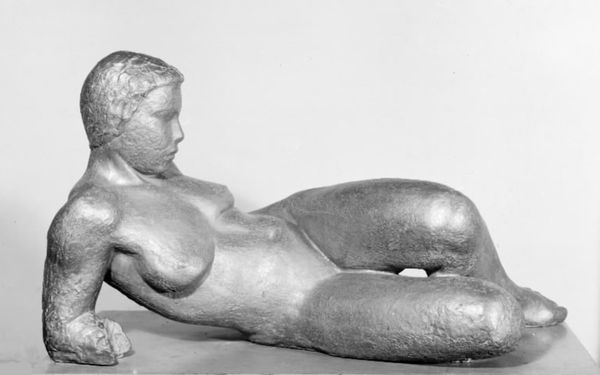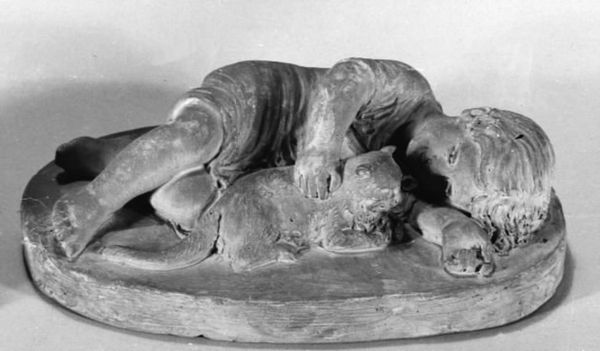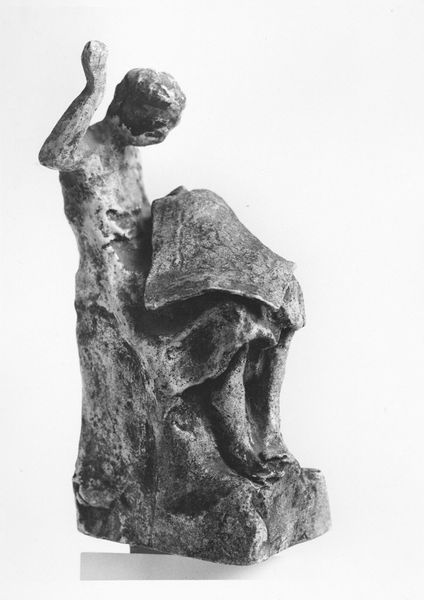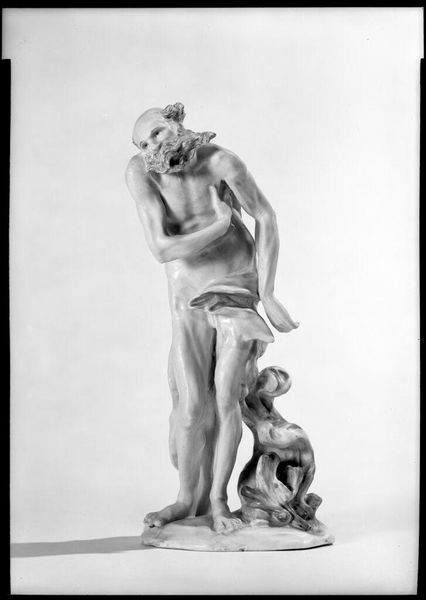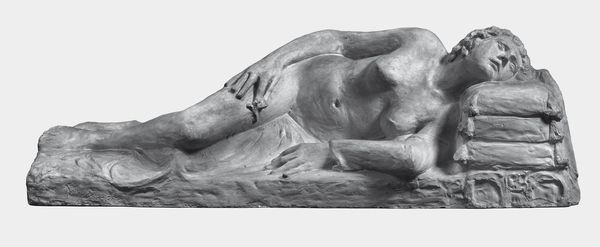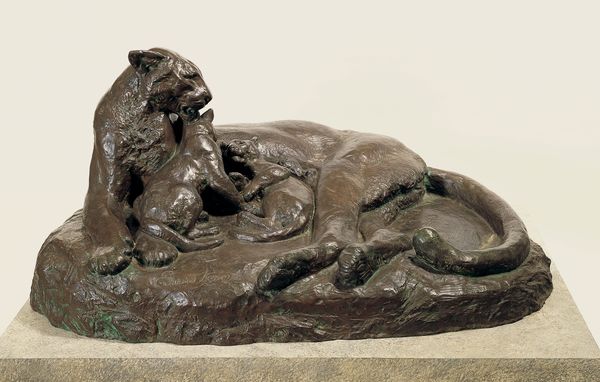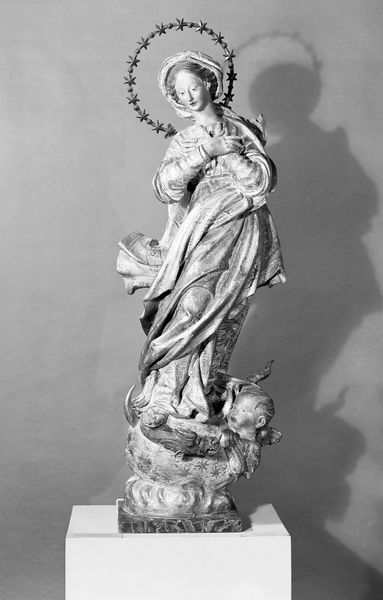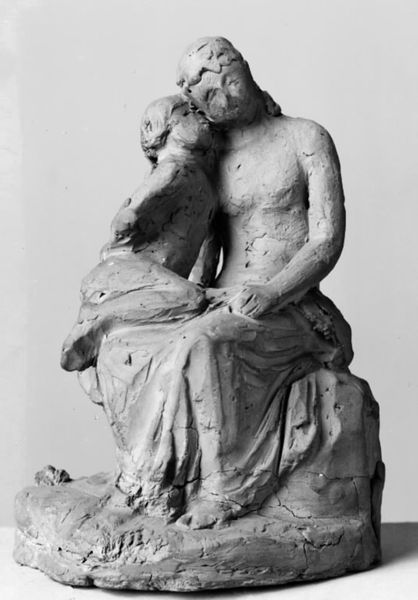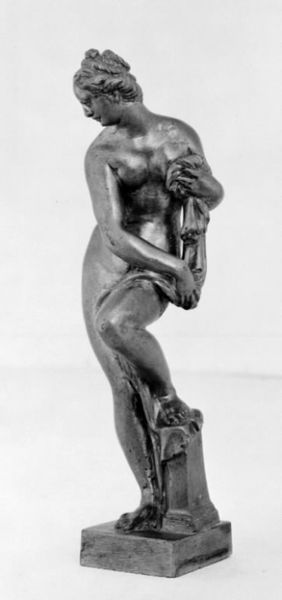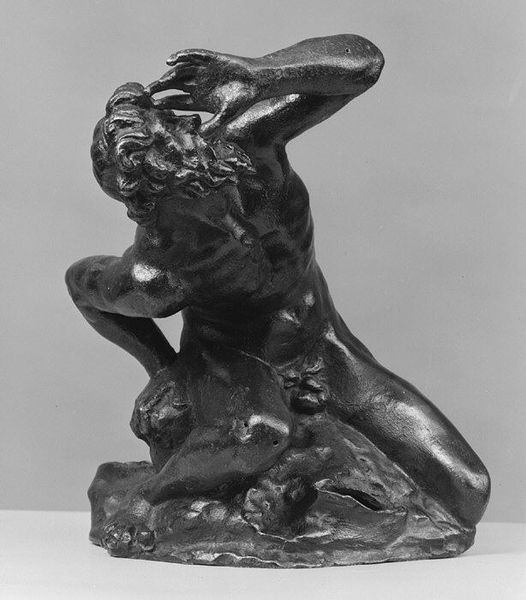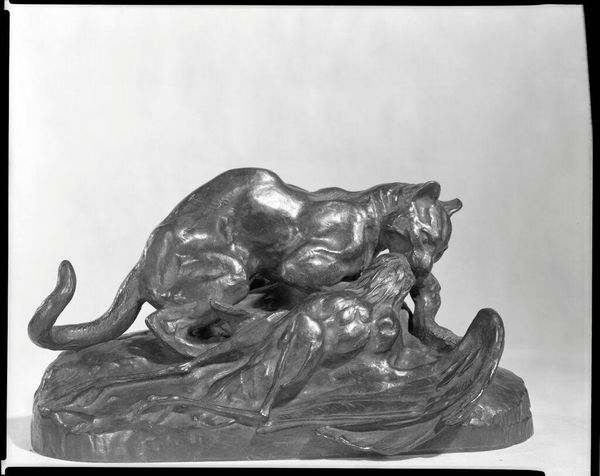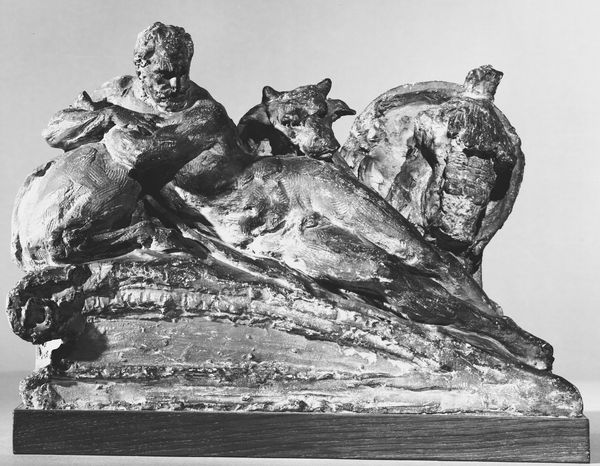
Dimensions: 24 × 36 cm (9 7/16 × 14 1/8 in.)
Copyright: Public Domain
Editor: This is Jean-Baptiste Carpeaux’s marble sculpture, "Allegory of Science," created around 1865. I'm immediately struck by the figure's posture—reclining and contemplative. It feels both powerful and vulnerable. How do you interpret this work within its historical context? Curator: This sculpture emerges from a period where science was rapidly gaining societal prestige. Carpeaux, working in the throes of the Second Empire, taps into the rising cultural authority of scientific progress. What does the figure's pose suggest to you about how science was perceived at the time? Editor: Well, his pose does evoke this image of thoughtful study, suggesting the intellectual labor and introspection required of scientists. It feels like science was elevated to something almost mythical. Curator: Precisely. The “allegory” in the title points to how abstract ideas gain concrete form through artistic representation, embedding values. Think about the patronage of art during that era—how did institutions like the Salon contribute to the legitimation of specific visual tropes and, consequently, ideas about scientific authority? Editor: So the artist wasn’t just representing science but also reinforcing a certain societal view of it? Were there any conflicting viewpoints during this time about the value and effects of science? Curator: Absolutely. There was always resistance. Remember the rise of industrialization—accompanying narratives involved anxieties about displacement, labor exploitation, even moral decay. The visual arts often served as a battleground for negotiating these ideological tensions. Examining Carpeaux's statue in relation to other contemporary works can illuminate those debates. What do you take away from this? Editor: It is clear how even seemingly simple artistic depictions were deeply influenced by complex historical currents. This really highlights how art plays a vital role in shaping societal perceptions. Curator: Indeed. Studying this statue provides valuable insights into understanding the socio-political construction of scientific authority in nineteenth-century France. It shifts art historical interpretation to incorporate political angles, an approach very revealing in these discussions.
Comments
No comments
Be the first to comment and join the conversation on the ultimate creative platform.
